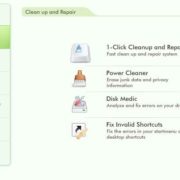Every gamer knows the importance of having a high-performing computer. After all, even a split-second delay could make you lose a game. Professionals from several fields need a PC that delivers its best at all times. You can hardly work on a project when the computer is slow and outdated.
However, even the latest computers need to be fine-tuned and optimized once in a while to
ensure consistent performance. This prevents lags, crashes, jerks, and frozen screens that
randomly ruin your experience and cause delays.
Here, we are going to learn about five effective ways to optimize your PC’s performance.
1.) Update Drivers
Don ’t stop after updating your graphics drivers. The CPU/ processor’s drivers are just as important. Games that use strategies and stimulators depend on CPU and GPU equally. Boosting one set of drivers but ignoring the other can affect your PC’s performance and reduce its lifespan.
Go to Device Manager on your computer to update the drivers. You can download the latest driver software from the internet or use online tools to automatically update and back up the drivers. Also, make sure to clean your computer inside and outside as dust on the hardware can affect its performance.
2.) In-Game Settings Optimization
Tinker with the game settings and align them with the capabilities of the computer’s hardware
for a higher FPS (frames per second). In most devices, anything more than 30 FPS delivers
decent output. 60 FPS or higher provides a beautifully smooth experience gamers want from
the PC. Pro gamers aim for 120 FPS, which provides the lightning-fast responses necessary in
certain HD games.
Check the in-game settings to reduce the resolution to the lowest possible option. This will
prevent lags and glitches. Then, slowly move upward, one step at a time to find the resolution
that suits your hardware. Similarly, adjust each setting and see how it affects the PC’s
performance. Delve deep into the advanced settings and find what works best for your device.
3.) Clear Disk Space and Remove Unwanted Files
Over time, your computer will store a lot of unwanted files in your hard drives. Many times, we
aren’t aware of this and wonder why the computer has slowed down. Regular scan and
optimization will get rid of such files and free up memory space. This will naturally lighten the
load on the processor and increase the device’s speed.
User-friendly tools like SpyZooka PC cleaner and anti-spy software can secure and optimize your
computer without the risk of data privacy violations. The software has a one-click manual scan
and automated scanning that runs in the background. With features, such as drive shredder, file
shredder, hardware analyzer, etc., it can increase the PC and browser speed by up to 30%. It
also detects malware and works in tandem with antivirus software on your computer.
4.) Disable Background Processes
The computer runs many programs in the background, whether you need them or not. This is bloatware, pre-installed software that occupies disk space and slows down the PC. Bloatware provides very little or zero utility value to many users. Fortunately, it can be deleted from the computer without affecting the operations.
Go to Task Manager and look for unnecessary background processes. Next, go to the Processes tab and right-click on the unwanted process. Then select End Task to stop it from running in the background. Finally, go to the Startup tab and disable all such applications. This will prevent them from automatically running each time you reboot the computer.
5.) Enable High-Performance Mode
While this mode may not have a drastic effect on your desktop computer’s performance, it will show good results on a laptop. Go to Settings and select System. Click on Power & Sleep option. Select Additional Power Settings to go to Control Panel. Now, select the High-Performance option from the Choose or Customize a Power Plan screen.
If the option is not found, search for it in the Show Additional Plans drop-down list. Sometimes, Windows can hide the High-Performance mode. In such instances, you can create a new mode by clicking Create Power Plan and selecting High Performance. Complete the new Power Plan and select it. This will allow the computer to prioritize performance instead of being an energy-efficient device.
Final Conclusion
The above-mentioned tips should help you optimize your PC to increase its performance. Remember that the software and hardware should be regularly updated to get the best results. The latest software will not be compatible with older hardware. Upgrading the components is an effective solution.
Furthermore, you don’t always need to buy the most expensive computer to get the best performance. List out your requirements and choose the one that fits your budget. How you take care of your computer also affects its performance and lifespan. Regular scans and maintenance increase the longevity of your PC.




